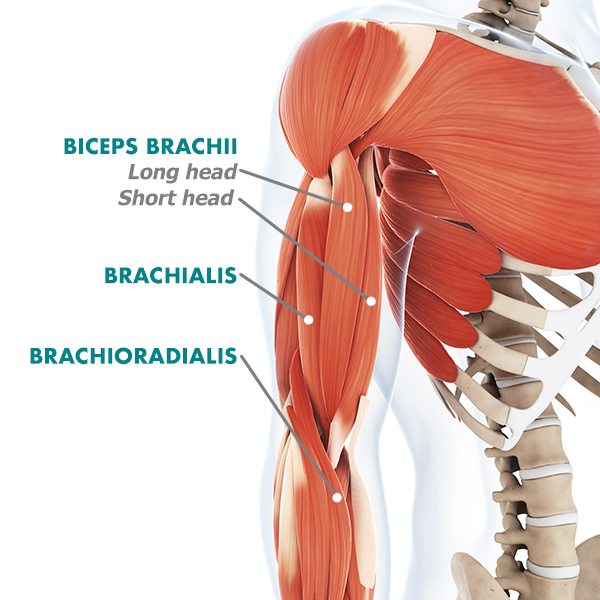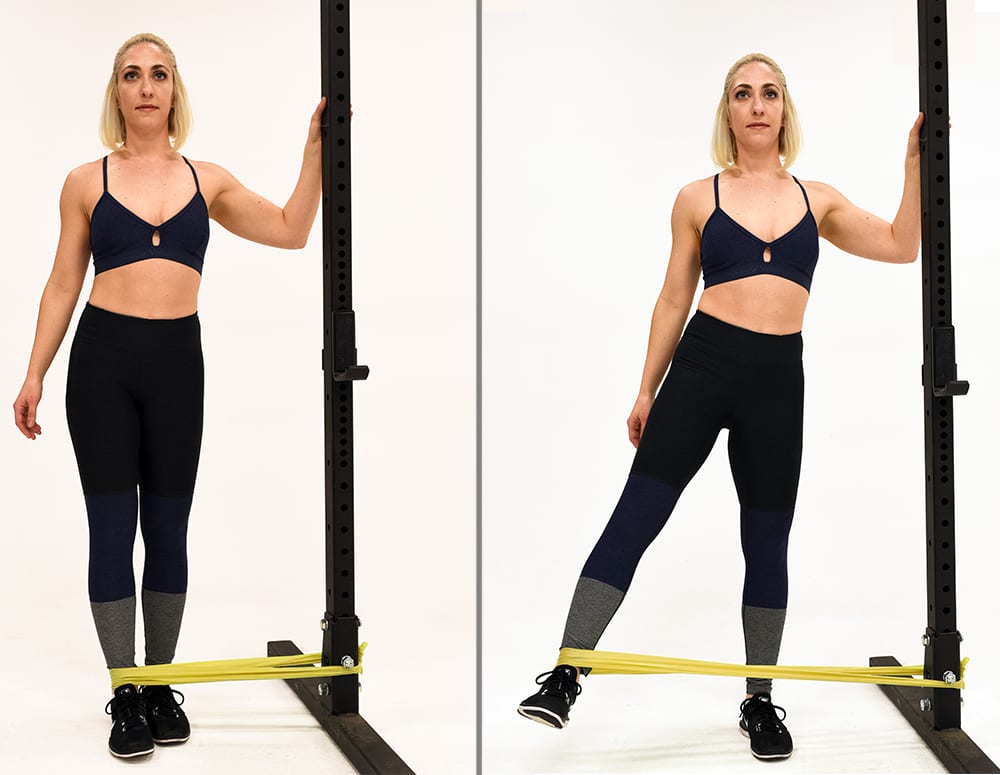72 Weightlifting Terms You Need to Know

To the neophyte, strength training is straightforward: pick up a weight, put it down, get strong.
Spend a few weeks or months on the internet or chatting up your new fit-buddies, and you come to realize there’s a whole lot of science, art, and jargon behind the apparent simplicity: compound exercises; plyometrics; supination; RPE; 1RM; ATG.
To help you figure out what the gym bros and fitness nerds are yapping about, we’ve put together a cheat-sheet of weightlifting terms that breaks it all down for you.
So next time someone recommends that you “Try to PR on the final pyramid set of your compound movements the final mesocycle before deload,” you’ll know what they’re talking about.
FORM/MOVEMENT
Ass to grass

A movement performed in squat variations wherein the knees and hips flex fully, and the glutes are close as possible to the floor. Often abbreviated as ATG.
Compound movement
An exercise that involves significant movement of two or more major joints. Examples include squats, lunges, deadlifts, pull-ups, and presses of all kinds.
Concentric movement
A type of muscle contraction in which a working muscle goes from a lengthened to a shortened position. In strength training, it’s the part of the move at which the weight (or your bodyweight) moves upward, as in the ‘pushing’ portion of an overhead press.
Eccentric movement
A type of muscle contraction in which a working muscle goes from a shortened to a lengthened position. In strength training, it’s the part of the move at which the weight (or your bodyweight) moves downward, as in the ‘lowering’ portion of an overhead press.
Flexion
A movement in which a joint goes from an open to a closed or bent position, as in a biceps curl or sit-up.
Extension
A movement in which a joint goes from a closed to an open or lengthened position, as in a triceps extension or a deadlift.
Functional movement
A movement, exercise, or drill that resembles, or helps to improve, activities regularly encountered in everyday life. For instance, carrying groceries or hoisting luggage into an overhead bin.
Grip strength

The capacity to grasp, hold, pinch, carry, and hang from objects of various shapes, sizes, and weights using primarily the strength of your fingers and hands.
Grip strength is a component of many different gym movements, including farmer’s carries, rows, deadlifts, pull-downs, pull-ups, and, to a lesser extent, presses, and is considered an indicator of general health and a reliable predictor of longevity.
Hip hinge
A movement in which both hip joints flex (bend) while the spine remains braced and rigid. A Romanian deadlift is an example, as is the set-up position for the standing row.
Isolation movements
Exercises that involve significant movement of just one major joint. Examples include lateral raises, triceps extensions, and biceps curls.
Isometric exercise
An exercise that places tension on one or more muscle groups, but requires minimal movement at any major joint. Examples include the wall sit and the plank.
Lengthening
The act of extending, relaxing, or releasing a muscle or muscle group. In the forward bend stretch, for example, the hamstring muscle group on the backs of the thighs lengthens as you fold forward.
Shortening
The act of tensing or contracting a muscle or muscle group. In the curl exercise, for example, the biceps muscles of the upper arms shorten as you raise the weight.
Lifting to failure
Performing an exercise until you are unable to complete another repetition.
Technical failure refers to performing an exercise until you are unable to complete another full repetition with good form.
Absolute failure refers to performing the exercise until you can no longer move the weight at all, and usually involves performing several partial repetitions — sometimes with the help of a training partner — until your muscles are completely exhausted.
Supination

The act of turning your hand or foot upward or outward so that the palm or sole is pointing up. In a dumbbell curl, supinating your hand as you raise the weight results in greater tension on your biceps muscles.
The term also applies to the whole body, when an exercise is performed on one’s back (supine).
Pronation
The act of turning your hand or foot downward or inward so that the palm or sole is pointing down. The term also applies to the whole body, when an exercise is performed on one’s stomach or facing down (prone).
Time under tension (TUT)
The time taken to complete all phases of a strength-training exercise, sometimes expressed as a four-digit number, with each digit referring to the time taken to complete a specific portion of the movement.
So a pushup with a 4210 tempo would be a set of pushups in which you take four seconds to lower yourself towards the floor; two seconds holding the “down” position; one second to push yourself back up, and zero seconds — no time — in the “up” position. Each rep of the pushup would give your chest, shoulders, and triceps seven total seconds under tension.
WORKOUT DESIGN
Active recovery

Light, easy movement performed on non-exercise days — or between or after training sessions on workout days — intended to stimulate circulation, relieve soreness, and enhance recovery. Examples include foam rolling, easy swimming, walking, stretching, dynamic warmups, and yoga.
Bulking
A training block focused on building muscle mass, usually involving heavy, compound exercises, extra protein and calories, and a focus on rest outside the gym.
Calisthenics
Repetitive exercises involving bodyweight only. Examples include push-ups, squats, jumping jacks, and sit-ups.
Cutting
A training block focused on losing fat, usually involving reduced calories, continued focus on protein consumption and strength training, and an emphasis on additional low-intensity exercise outside the gym.
Deloading
A short period — usually a week — of reduced volume and intensity in a strength-training program, usually following a week or more of high-intensity and high-volume training.
Density training
A training style focused on completing as many reps, sets, and/or exercises as possible in a given period of time. Example: performing as many rounds as possible of 10 reps each of push-ups and squats in 10 minutes.
Drop set
A set of a strength training exercise performed immediately after one or more medium to heavy sets in which you drastically reduce the weight used in order to further exhaust a muscle.
Dynamic stretching/warmup

Light warmup moves, performed with bodyweight only, to increase core temperature, loosen joints, increase circulation, and reduce injury. Examples include high kicks, jumping jacks, and walking lunges.
Full-body training
A training block or program in which you work all the major muscles of the body in each workout.
Muscular endurance
The capacity of a muscle to contract repeatedly under tension before fatiguing.
One-rep max
The amount of weight you are capable of lifting, for a single repetition at maximal intensity, in a given strength-training exercise.
Overtraining
In strength training (as opposed to endurance training), working out at a level of volume and/or intensity from which you are unable to recover from one workout to the next.
Symptoms include increased resting heart rate, reduced heart rate variability, lack of motivation, and hampered progress.
Periodization
An approach to training which focuses on different goals — strength, power, endurance, recovery — in training blocks lasting four to 12 weeks, throughout the training year.
An example is the Super Blocks concept, in which you work out in three-week blocks, each focused on a particular aspect of fitness, separated by one-week deloads (see above).
Power
The capacity to express strength quickly. A 100-meter sprint or a long jump are tests of power. In physics, power is expressed as force x acceleration, so the stronger you are and the faster you move the more powerful you are.
Plyometrics

Jumps, throws, and calisthenics moves designed to develop athletic explosiveness and power, and enhance strength.
PR (Personal record)
An individual’s performance in a lift or other exercise that represents their best effort to date. Examples in strength training could include performing more pull-ups in a row than you’ve ever done without dropping from the bar, or lifting more weight for a single repetition than you ever have in a deadlift.
Progressive overload
Systematically increasing the reps, weight, and/or volume of a strength training program over time in order to boost strength, muscle mass, endurance, and other components of fitness.
Pyramiding
A strength training strategy in which the weight increases incrementally in an exercise over several sets while repetitions inversely decrease, often culminating in a single all-out set of five or fewer reps.
Reps
A single cycle of a strength-training movement, including — if applicable — lowering, lifting, and/or isometric holds.
Sets
A rep or group of reps of an exercise performed in succession to increase some aspect of fitness. Usually expressed along with the rep count of the exercise, as in, “Three sets of 10 reps,” or, simply, “3 x 10.”
Split training
As opposed to full-body training (see above) a split program focuses on different muscle groups or movements on different days of the week, or days within a cycle of workouts.
Some examples include “push-pull” in which the lifter performs movements that involve pushing exercises on some days, and pulling exercises on others; “upper-lower,” in which the lifter works upper body some days and lower on others, and “body part splits,” in which the lifter works just one or two individual muscle groups — say, arms or back or legs — each workout.
Strength

The ability to exert force to overcome resistance. In physics, strength is expressed as force x distance — so the more force you can exert, and farther you move the resistance, the stronger you are.
Super setting
Alternating sets of at least two exercises, back to back, usually to save time, or to increase the workload on a given muscle group.
Undulating periodization
A variation of the standard periodization (see above) model in which you vary the focus of the workouts within the same training block in order to reduce stress, and create a stimulus for broader adaptation.
So, instead of focusing on endurance for four weeks, hypertrophy for four weeks, and strength for four weeks, you might perform two endurance workouts, two hypertrophy workouts, and two strength workouts each week for a six- or eight-week period.
Volume
The total amount of work performed in a given workout, week, or training block. Sometimes expressed as “weight lifted x sets x reps,” but often short handed as “number of working sets.”
METABOLISM/ENERGY/NUTRITION
Amino acids

The building blocks of dietary protein, which form the raw materials for muscle- and tissue-building within the body.
Anaerobic vs. aerobic
In biology, aerobic reactions are those that require oxygen, and anaerobic ones do not. So, many trainers and exercisers refer to endurance activities (running, swimming, cycling, etc.) as aerobic, and strength and power activities (strength training, sprinting) as anaerobic.
In truth, few if any physical activities are purely one or the other; most activities lie on a spectrum somewhere between the two extremes.
ATP (Adenosine triphosphate)
The primary fuel that powers biological activity in the body. Energy in food (carbohydrate, fat) is converted through metabolism into this energy to perform work.
Broscience
Scientifically unproven training and nutritional advice, often delivered by people with few if any legitimate credentials, in person or on social media.
EPOC (Excess post-exercise oxygen consumption)
The tendency for the body to continue burning energy above your baseline metabolic rate after the conclusion of a workout.
EPOC is somewhat higher after high-intensity activities like sprints and circuit training than lower-intensity ones, but, contrary to some older research, not a major contributor to caloric burn or fat loss.
Hypertrophy
Lactate
An often-misunderstood and mischaracterized fuel source for muscle contraction, produced and burned during prolonged high-intensity strength or endurance training.
RPE (Rate of perceived exertion)
A subjective scale, expressed as a number from six to 20 or one to 10, of how hard a person is working relative to their maximal capacity.
ANATOMY
Biceps

The muscles on the fronts of the upper arm, responsible for flexing (bending) the elbow.
Glutes (gluteals)
The “butt muscles” on the backs of the hip joints responsible for extending the hips.
Lats (latissimus dorsi)
The thick muscles on the sides of the torso responsible for drawing the arms back and down, and helping to extend the lower back.
Pecs (pectorals)
The chest muscles, responsible for drawing your upper arms towards, and past, your center line.
Quads (quadriceps)
The muscles on the fronts of your thighs, responsible for extending your knee joint.
Traps (trapezius)
The kite-shaped muscle on your upper back, responsible for drawing your shoulder blades upwards, backwards, and downwards.
Triceps
The muscles on the backs of your upper arms, responsible for extending (straightening) your elbows.
Abduction

The act of moving an arm or leg away from the center line of the body.
Adduction
The act of moving an arm or leg toward the center line of the body.
Anabolism
All metabolic activities that involve growth, or the assembling of smaller biological components into larger ones. Muscle growth, which involves the construction of new muscle tissue from amino acids, is one example.
Atrophy
Muscle loss or breakdown.
Body composition
A measurement or the proportion of body fat in a person relative to their overall body mass.
Muscle fiber type
A way of categorizing the long, parallel, hair-like fibers that comprise muscle tissue. (See also fast twitch and slow twitch).
Recomposition

Changing the relative proportion of body fat and muscle tissue in the body, with minimal change in total body mass.
Catabolism
Metabolic activities that involve breakdown, or the breaking of larger biological components into smaller ones. Fat loss, which involves the breaking of fat tissue into triglyceride fuel, is one example.
DOMS (Delayed onset muscle soreness)
Soreness in muscles felt many hours — or sometimes days — following a hard exercise session.
Fast twitch
A type of muscle fiber, also known as type II, that’s large and light in color, and responsible for fast, high-effort, high-exertion movements like all-out sprints and heavy lifts.
These are distinguished from slow-twitch, or type I, fibers, which are slimmer and darker, and responsible for slower, lower effort movements like jogging and lighter, faster lifts.
Midline
An imaginary center line that bisects the body vertically.
Mind-muscle connection
The mental awareness of the action of your muscles as they lengthen and contract, shown to improve the effectiveness of a strength-training program.
Muscle imbalance
A difference in the relative strength of muscles on two sides of the body or two sides of a joint, believed to play a role in posture and susceptibility to injury.
Range of motion

The direction and degree to which a joint or a series of joints move — or are capable of moving — in a particular exercise or stretch.
Sarcopenia
Loss of muscle mass stemming from disease, aging, or disuse.
